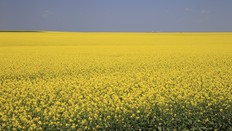A surprising source of clouds in Antarctica: Penguin poop
Given that they mainly feast on fish and krill, their excrements contain large amounts of nitrogen waste that breaks down into ammonia

Article content
The clouds in Antarctica might be fueled by penguin poop.
Penguin poop – sorry, penguin guano – is creating clouds in Antarctica that could be affecting local temperatures, according to new research published Thursday in Communications Earth & Environment.
As millions of penguins eat and breed in Antarctica, they leave behind buttloads of guano. Given that they mainly feast on fish and krill, their excrements contain large amounts of nitrogen waste that breaks down into ammonia. Scientists found the incredible amounts of ammonia left behind combine with sulfur compounds from the ocean and grow clouds within hours.
Previous computer models have found such seabird guano-fueled clouds in the Arctic do cool the ground, but the study authors said observations are needed to confirm the effect on the climate. The clouds may also have varying cooling or warming effects depending on whether they’re located over ocean or ice.
“There are connections between things that happen on our natural planet that we just don’t necessarily expect,” said Matthew Boyer, lead author of the study and doctoral candidate at the University of Helsinki. “And this is one of them.”
At the Marambio Base on the Antarctic Peninsula, Boyer and his colleagues measured the concentration of ammonia from a colony of 60,000 Adelie penguins in January 2023. They found the guano was a major source of ammonia on the coast, even surpassing ammonia from the Southern Ocean. When the wind blew from the direction of the colony, the team’s instruments – 5 miles away – measured ammonia concentrations 1,000 times higher than the typical background level.
Even when the penguins left the area at the end of February and their guano remained, the concentration was still more than 100 times higher than the normal level.
As ammonia spiked, the team saw a period of fog that they concluded was linked to the higher aerosol particle concentration. It took about three to four hours for the fog to form.
The chemicals in the guano helped accelerate cloud formation, Boyer said. Sulfur compounds from the phytoplankton from the ocean combined with ammonia and dimethylamine from the guano, which accelerated the formation of cloud particles by 10,000 times.
RECOMMENDED VIDEO
The clouds’ effect on the climate is unclear. Clouds absorb radiation from both the sun and coming off of the planet. Most clouds on Earth have a cooling effect, reflecting sunlight back to space. But Boyer said ice is highly reflective and also emits radiation; if a cloud is less reflective than the ice below it, then it could trap that heat and add to surface warming.
But computer models from previous studies hint that the net effect would likely cool the surface. A study in 2016 looked at clouds over the Arctic from seabird guano and showed a cooling effect over the region – exceeding 1 watt per meter squared near large seabird colonies. The study’s computer models showed the clouds consisted of more droplets, but smaller ones, which reflected more sunlight back to space.
“We can hypothesize that there will be a cooling effect from the clouds because, in general, that is the most prominent effect of clouds in the atmosphere,” said Boyer, who aims to conduct more observations. “Models are a good way of estimating how things could be, but you need to double check with measurements.”
Bigger penguin species or larger penguin colonies – some can have hundreds of thousands of penguins – could produce even bigger clouds. The larger clouds, Boyer said, tend to have more but smaller droplets and reflect more sunlight. They also don’t produce much precipitation.
It’s unclear how these guano emissions will change in the future as populations change. About a dozen penguin populations are declining, according to the International Union for Conservation of Nature. The Adelie penguins in the study are one of the few experiencing an increase in numbers.
The findings aren’t surprising because lab experiments have shown that gases emitted by guano help form particles in the atmosphere, said Ken Carslaw, an atmospheric scientist at University of Leeds who was not involved in the research. But he said the study is a “valuable confirmation that what has been observed in the lab can explain what’s going on in the real atmosphere.”
These poo-fueled aerosol particles or clouds likely won’t affect climate change even if they changed substantially, he added. Still, it’s important to understand these guano gases because they are part of the natural atmosphere.
“It’s vital to understand these natural environments are the baseline from which we quantify and understand human effects on climate,” Carslaw said. “These observations are another piece of the puzzle that will help to improve how clouds are represented in climate models.”
While scientists have long seen how human-caused climate change is affecting the Arctic, the trends in Antarctica have been more mixed until recently. In seven years, the continent has hit three record low sea ice summers – what some scientists see as the beginning signs of human-caused climate change overriding the natural processes on Antarctica.
The local changes in Antarctica and the Arctic have a global impact on the climate. The melting of both ice sheets influence sea-level rise around the world, calculated to cause levels to rise a meter higher by 2100. But the distribution is not even, with some areas already reeling from the effects.
“The oceans and the penguins are influencing the atmosphere and actually influencing the local climate in Antarctica,” Boyer said. “The local changes in Antarctica will have an impact on global climate.”











Postmedia is committed to maintaining a lively but civil forum for discussion. Please keep comments relevant and respectful. Comments may take up to an hour to appear on the site. You will receive an email if there is a reply to your comment, an update to a thread you follow or if a user you follow comments. Visit our Community Guidelines for more information.